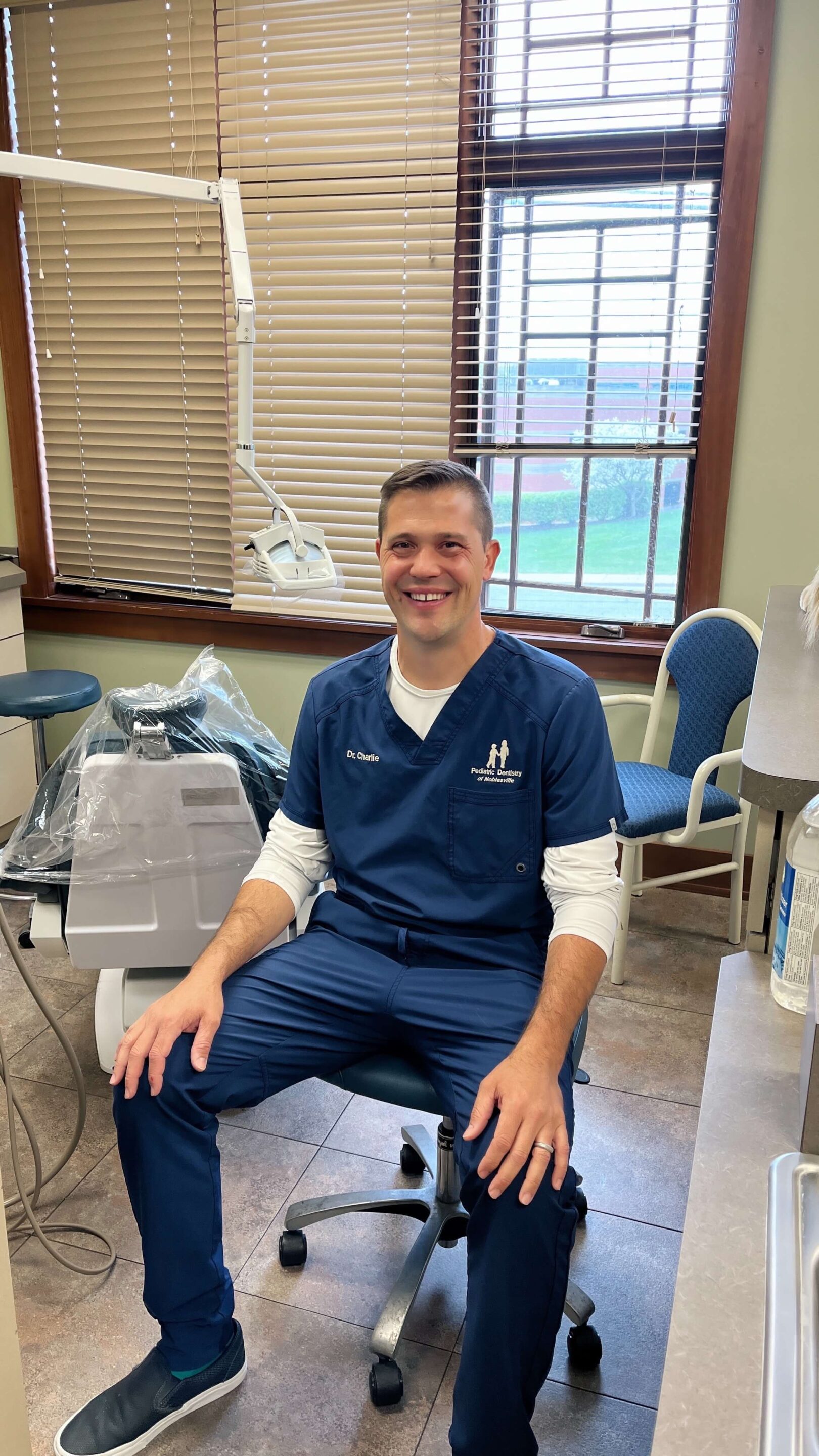Dental Fillings
Dental Fillings or restorations are a way of replacing or restoring damaged or decayed teeth. Traditionally, dental fillings are placed into an area of a tooth after dental decay (a cavity) has been removed from that tooth. There are many options for materials and methods when placing a dental restoration. Our goal is to restore broken or decayed teeth while using the best materials for the job.
What Is a Dental Filling?
Dental Fillings or restorations are a way of replacing or restoring damaged or decayed teeth. The filling itself is a material placed in or around a tooth to make that tooth whole again. Fillings are made of many different materials that will restore a tooth to health. Each material has different properties that make it ideal for a given situation. The dentist will help to inform you of the best option for the tooth in question and may even give different choices on what is to be used for your child.



We primarily use resin fillings. These are the tooth-colored fillings that stick directly to the tooth. A resin filling is water sensitive and must be placed in a completely dry environment. It involves several steps of cleaning and drying that can be difficult for some patients. We place resin restorations in all teeth that can be kept dry and will function well with this type of filling. We only use tooth-colored fillings in the front of the mouth.
Glass ionomer is another type of tooth colored filling that we use. It is also used as a glue for crown (caps) and space maintainers. It releases fluoride into areas it is bonded to and does not need as dry an environment as a resin restoration. A glass ionomer is worn away easier than resin fillings and might need to be replaced more frequently.
Amalgam fillings are the traditional silver fillings placed into teeth. We rarely use silver fillings. These are best placed in teeth that cannot be kept dry. Amalgam fillings have a very good success rate and can last for a very long time. We never place silver fillings in front teeth.
Stainless steel crowns are not a fillings, however, they are used to restore badly broken teeth or teeth that are difficult to restore with any other material. A crown (cap) fits completely around the existing tooth and protects it much like a suit of armor. Because of the silver color, we only use stainless steel crowns on back teeth. These are the strongest restorations with the best long term survival rate among any other filling (restoration). A stainless steel crown will allow the tooth to function normally and will keep the underlying tooth cavity free.
FAQ’s
Why do we place dental fillings?
Dental fillings are placed on or in a tooth to return that tooth to full function in both look and chewing. Many factors go into the decision to place a filling. We are concerned with how long a tooth will be in the mouth, how big is the problem, what material is best, can we keep the area clean, will the filling last…etc. There is also a patient attached to the teeth. We must consider the patient’s overall health, allergy concerns, behavior, oral hygiene, frequency of appointments, parental preferences…the list goes on and on. While a dental filling is a simple procedure in most cases, there are multiple considerations to make before a tooth is restored.
We place dental fillings (restorations) to stop the progression of dental decay (cavities). This will often involve numbing or anesthetizing the tooth and associated area. This is done to ensure our patients are pain free during treatment. We ask that instead of informing your child about the possibility of being numb, allow our staff to explain the procedures on the day of treatment. We will use friendly language and tricks of the trade to help make this a positive experience.
We restore even baby teeth that have dental decay. We do this so that the decay does not reach the nerve of the tooth (pulp). If the decay reaches the nerve, the tooth may need more advanced treatment or may need removed. If left untreated, often these teeth will become very painful and can even cause a severe dental infection. Some baby teeth will not fall out until the patient reaches the age of 12 or older. Restoring teeth at the appropriate time will help to minimize these types of problems.
When a child falls and chips a tooth, that tooth will often need a filling. Broken baby and adult front teeth need a unique approach to ensure a proper and long-lasting restoration is placed. These teeth must look good and function normally. There are many options when restoring a broken tooth and we work diligently to get these teeth fixed as soon as possible. If your child experiences a broken tooth, call our office immediately. Even if it is not during our normal business hours, we are available for dental emergencies. If you can find the fractured portion of the tooth, keep it well hydrated in milk in case we can reattach it.
How do we place dental fillings?
We place all dental restorations with your child’s safety being our number one priority. We must ensure that during our dental filling procedures, we have made the patient as comfortable as possible and have minimized any dental anxiety. This can be achieved by simple conversations, explaining the steps of the procedures, and even utilizing laughing gas (nitrous oxide). We only use kind dental terminology and avoid any scary words. We stive to instill trust in our patient/provider relationship. We want our patients to understand we do not want them to be scared or feel pain during any procedures.
The dentist may use a dental dam to place dental fillings on your child. This protective device goes by many names. We call it a tooth trampoline, a tooth tent, or even a raincoat. We believe in using the safest techniques to help protect your child while in our office. The dental dam may look uncomfortable; however, children usually tolerate this quite well. It is only used for a short time during our appointment, but the benefits greatly outweigh any shortcomings of this protective device.
We work hard to avoid any traumatizing situations for our patients. When patients are too young, unable to cooperate, or have extreme dental anxiety, we may recommend treatment under general anesthesia. This is to avoid traumatizing the patient, to help prevent physical harm from sudden movements, and to place restorations that will have the best chance for long-term success. General anesthesia can be completed in our office utilizing a dental anesthesiologist or might be performed in a hospital setting. The dentist will discuss what options would be best for your child.
Who will benefit from dental fillings?
All patients with teeth that need fillings will benefit. This is true in most cases, but your dentist might prefer to place a close watch on a tooth with a small cavity as well. Because we work with teeth that fall out, we don’t believe every small area of concern needs a filling. If the patient can brush and floss an area of concern, and that area won’t get bigger, we will recommend this. Some baby teeth won’t fall out until patients get to age 12 or older. We will use behavior, age, time until exfoliation, and size of decay to determine if a tooth needs to be fixed and what filling (restoration) will be best. We strive to be good custodians of your child’s dental needs.
When do you recommend dental cleanings?
It is a common misconception that teeth don’t need fillings unless something hurts. This especially becomes an issue with baby teeth. Baby teeth won’t become symptomatic (painful) until the decay (cavity) has become large. Depending on the amount of pain and the size of the cavity, many baby teeth will need advanced treatment or removed once they begin hurting.
We prefer to fix teeth with fillings before they become symptomatic (hurt) and after they have become large enough that regular brushing and flossing will no longer work. This can be difficult to determine. It is important to keep regular dental visits and allow for regular radiographs to follow areas of concern. If you were to notice a cavity in your child’s mouth, especially in areas that we are watching, please make an appointment to have it evaluated. We do not want to wait too long to fix a tooth.
Where do I get a filling?
The dentists at Pediatric Dentistry of Noblesville will evaluate the tooth in question and recommend the best location to place the filling (in the office or hospital) and best material for your child.
Professional Accreditations






